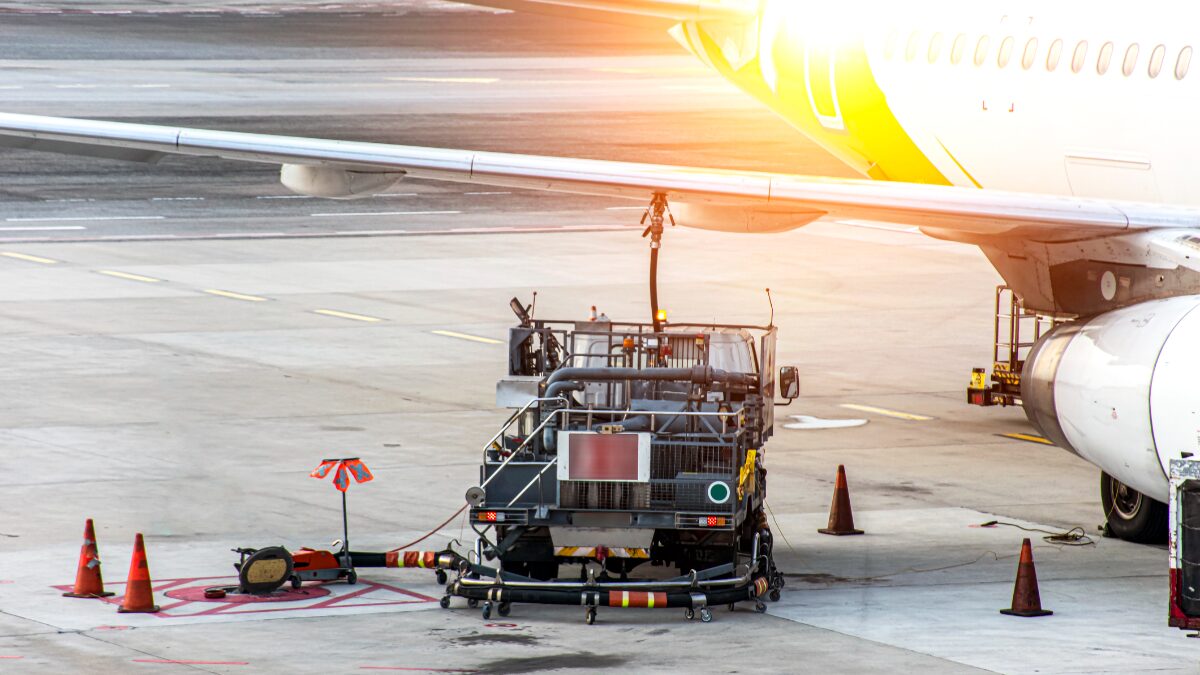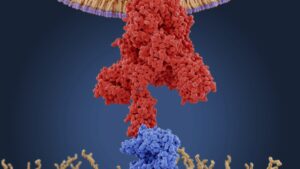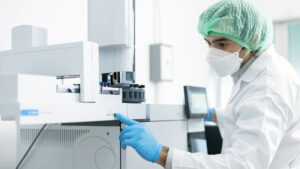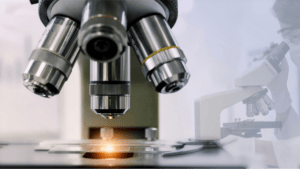Trajan’s tech is enabling research into next-gen aviation fuels

Flying high: Trajan’s tech is helping enable research into next-gen aviation fuels aimed at reducing carbon emissions. Pic via Getty.
- Trajan’s technologies are enabling advanced research into next-generation aviation fuels
- SilFlow microfluidic chips enhance gas chromatography instruments enabling detailed fuel analysis
- Researchers aim to determine if alternative fuels can directly replace conventional Jet A-1
Special Report: Trajan Group’s consumables and precision components are enabling sustainable aviation fuel (SAF) researchers to understand the differences between Jet A-1 and SAFs to support the aviation industry’s decarbonising objectives.
Andrew Gooley, Chief Scientific Officer of Melbourne-headquartered global analytical science and device company Trajan Group (ASX:TRJ), said SAFs were being researched to minimise overall global energy-related carbon dioxide (CO2) emissions.
“The aviation industry contributes around 2-3% of global energy-related CO2 emissions,” he said.
“It’s an area most active in research to minimize global CO2 emissions.”
Gooley said most aviation and vehicle fuels were derived from petroleum, a fossil fuel.
He explained that burning fossil fuels, including standard aviation fuel like Jet A-1, released new carbon into the atmosphere.
SAFs, however, recycle carbon already in the natural carbon cycle, making them a cleaner alternative.
‘Unravelling complexity’ of SAFs to current Jet A-1 fuel
Gooley said the problem that needs solving is whether SAFs are like for like so they could then be considered a “drop-in” fuel or substitute for Jet A-1.
“What scientists need to determine is how these fuels are different from the traditional kerosene-based Jet A-1 fuel and to do that they need to understand their chemical composition, and which components are likely to influence the properties of the fuel” he said.
To do this Gooley said scientists use gas chromatography, a laboratory technique that separates and analyses compounds in a sample by vaporising them.
In this case the scientists use a complex form of gas chromatography known as GC x GC or two-dimensional (2D) gas chromatography.
“It’s probably the most sophisticated separation technique available for this type of application – understanding how many different chemicals are in sustainable aviation fuels and how they differ from the Jet A-1” he said.
Gooley added that when analysing SAFs, scientists are working to characterise compounds which might influence the properties of the fuel, such as flash point, viscosity and freezing point.
“That’s where they use our devices to unravel the complexity of those fuels,” Gooley said.
Trajan’s SilFlow solution
As part of the components and consumables section of its business, Trajan supplies an enormous range of products for gas chromatography.
Gooley said Trajan’s SilFlow microfluidic chip could split the sample flow, enabling parallel detection simultaneously, allowing scientists to gather the full range of data needed to extract meaningful results.
“A microfluidic chip is a switch, and it allows you to take advantage of pressure to change the pathway of how a sample moves through the instrument,” he said.
“In the case of a study on sustainable aviation fuels what the scientists wanted to do was compare the data from two different detectors at the same time.”
“One was to a detector which was quantitative to measure the amount of a chemical present in the fuel and the other went to a mass spectrometer which gives the structure of the same chemical.”
Gooley said alkanes – energy-rich hydrocarbons found in both traditional and sustainable aviation fuels – are the most analysed fuel component due to their embedded energy, making them ideal as a fuel source.
“The problem is there are thousands of these alkanes due to their isomers -same molecular formula but different structural formula,” he said.
“So, when they measure the amount, they want to be able to match the structure to the chemical they’ve just measured – so precision in the switch is absolutely fundamental.”
Fluidic logic: simplifying gas chromatographs
CEO and managing director Stephen Tomisich said gas chromatography was far more powerful with “complex plumbing inside” the instruments.
“Before our device when customers were developing complex types of plumbing you could open a gas chromatograph and look inside and it looked like a bowl of spaghetti because there were tubing and connections going everywhere,” he said.
“SilFlow puts all that logic onto a chip so that instead of seeing that complex arrangement you see a very simple one that allows that direction of flow, that splitting of flow into different parts of the instrument to perform different functions to happen far more efficiently and effectively.
“Last time I counted there were around 60 or 70 different types of fluidic logic that we were using inside of these sorts of platforms around the world to enhance capabilities to do these types of measurements.”
Demand for knowledge about environmental contaminants in aviation and energy storage
Gooley said as environmental concerns around fuels and industrial activity grow, there is rising demand for technologies like SilFlow to help research scientists understand the presence of contaminants and their ecological impact.
There is also growing concern about environmental contaminants linked to fuel handling and storage – for example, per- and polyfluoroalkyl substances (PFAS), which are synthetic “forever chemicals” commonly used in firefighting foams at airports and fuel sites.
Firefighting training grounds use aqueous film-forming foam (AFFF) – in which PFAS is a key ingredient – resulting in long-term pollution.
Remediation of these sites is essential to limit the migration of PFAS into the water table, surrounding environments and ultimately into the food chain.
And Trajan’s environmental business unit plays a key role in supporting efforts to detect and monitor harmful contaminants.
The company’s chromatography consumables and workflows — including GC columns like BPX1 and its SilFlow splitter — are widely used in the analysis of pesticides, herbicides, and persistent organic pollutants (POPs) such as dioxins, polychlorinated biphenyls (PCBs) and PFAS.
Along with firefighting foams PFAS have also been used in a range of other products from water-resistant clothing to cookware and cosmetics.
“We ensure that we have no PFAS contamination in our devices and consumables so that scientists can measure the true levels of PFAS in the environmental and biological samples they are testing,” Gooley said.
He said in recent years, demand for sophisticated analytical technologies has only grown – particularly in capillary GC, comprehensive 2D GC, nano and capillary liquid chromatography (LC), and critically, their coupling with mass spectrometry.
“It goes without saying that ‘science that benefits people’ can be no better defined than monitoring the water we drink, the soils we inhabit and grow our food to monitor the presence of these toxic chemicals,” Gooley said.
This article was developed in collaboration with Trajan Group, a Stockhead advertiser at the time of publishing.
This article does not constitute financial product advice. You should consider obtaining independent advice before making any financial decisions.
Related Topics

UNLOCK INSIGHTS
Discover the untold stories of emerging ASX stocks.
Daily news and expert analysis, it's free to subscribe.
By proceeding, you confirm you understand that we handle personal information in accordance with our Privacy Policy.








